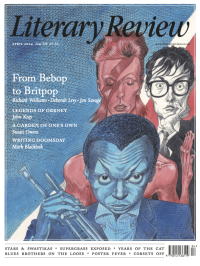Charlie Campbell
God, Drugs & Music
The Blues Brothers: An Epic Friendship, the Rise of Improv, and the Making of an American Film Classic
By Daniel de Visé
White Rabbit 386pp £25
The pages of my copy of The Blues Brothers started to fall out as I was reading it, just as John Belushi entered the story. It was perhaps fitting, since his considerable talents were matched by a gift for self-destruction. Belushi was at the front of a wave of talented actors and comedians who announced themselves to America on NBC’s Saturday Night, which then became Saturday Night Live. The show, with its mixture of comedy and political satire, launched a number of careers, including those of Dan Aykroyd, Chevy Chase and Bill Murray.
Belushi and Aykroyd would go on to make The Blues Brothers, the focus of this absolute blast of a book by Daniel de Visé, full of incredible research and fascinating details. Originating in a Saturday Night Live sketch, the film features Belushi and Aykroyd as ‘Joliet’ Jake and Elwood Blues, two brothers ‘on a mission from God’ to raise money to save the Catholic orphanage where they were brought up from closing. It’s a film in the great tradition of Tinseltown lunacy, one of those overblown productions that go way over schedule and budget. Acquired by Universal after a bidding war, the project had no script at the outset, just two stars and their desire to reacquaint America with some of her greatest black musicians and their work – and crash lots of cars while doing so. Hampered at every turn by bureaucracy and a wayward cast, The Blues Brothers might have become ‘a cinematic Vietnam’. That it didn’t is a miracle as surprising as anything that happens in the film.
Belushi was born in Chicago to Albanian-American parents. A talented sportsman, he soon found his true calling – performing, singing and improvising sketches in which he mimicked figures such as Elizabeth Taylor. His physical, anarchic comedy took him via Saturday Night Live to superstardom in National Lampoon’s Animal House,

Sign Up to our newsletter
Receive free articles, highlights from the archive, news, details of prizes, and much more.@Lit_Review
Follow Literary Review on Twitter
Twitter Feed
It wasn’t until 1825 that Pepys’s diary became available for the first time. How it was eventually decrypted and published is a story of subterfuge and duplicity.
Kate Loveman tells the tale.
Kate Loveman - Publishing Pepys
Kate Loveman: Publishing Pepys
literaryreview.co.uk
Arthur Christopher Benson was a pillar of the Edwardian establishment. He was supremely well connected. As his newly published diaries reveal, he was also riotously indiscreet.
Piers Brendon compares Benson’s journals to others from the 20th century.
Piers Brendon - Land of Dopes & Tories
Piers Brendon: Land of Dopes & Tories - The Benson Diaries: Selections from the Diary of Arthur Christopher Benson by Eamon Duffy & Ronald Hyam (edd)
literaryreview.co.uk
Of the siblings Gwen and Augustus John, it is Augustus who has commanded most attention from collectors and connoisseurs.
Was he really the finer artist, asks Tanya Harrod, or is it time Gwen emerged from her brother’s shadow?
Tanya Harrod - Cut from the Same Canvas
Tanya Harrod: Cut from the Same Canvas - Artists, Siblings, Visionaries: The Lives and Loves of Gwen and Augustus John by Judith Mackrell
literaryreview.co.uk